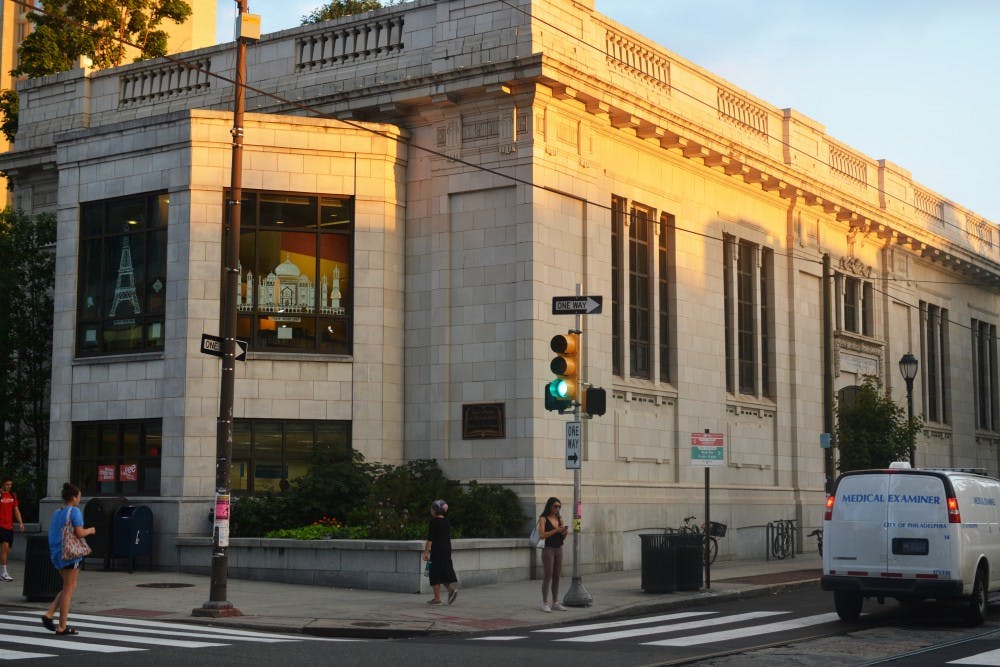Talk of the "Penn bubble" and lack of student involvement in the surrounding community has long been a hot topic among students and administrators alike. Penn's Office of Student Conduct, however, has a plan to tackle the issue.
An increasingly high number of students who break the Penn Code of Student Conduct are sent to nine locations throughout Philadelphia to fulfill their community service requirements.

Over the past four academic years, Penn has used community service to resolve cases at an increasingly high rate. In 2014-15, 11 Penn students faced a community service sanction, 26 students in 2015-16, 46 students in 2016-17, and 41 students 2017-18.
The nine locations Penn sends students to serve community service sanctions include The Department of Veteran Affairs Community Living Center, MANNA, The Pennsylvania SPCA, Philabundance, The Soup Kitchen at Hillel, Salvation Army of Greater Philadelphia, Project HOME, The Free Library of Philadelphia, and Penn Museum Archives Department.
West Philadelphia residents and Penn administrators say the community service requirements for these students have become a positive way to involve more Penn students in a community with which they historically do not engage.
RELATED:
What happens to Penn students who download content illegally over AirPennNet
Why students caught drinking in college houses can receive totally different punishments
Director of the Office of Student Conduct Julie Nettleton described the community service program as a positive experience.
“For code of student conduct violations, we frequently build in a requirement to complete community service if the violation was one that had a negative impact on the community in some way,” Nettleton said. "It's an opportunity for them to learn that there is a broader community they are a part of, that is the Penn community, that’s our off campus community that the broader West Philly community."
Community service hours are determined on a case-by-case basis. Conduct violations that could result in community service requirements include damaged property, disorderly conduct, and physically harming a person on the way to the hospital. The Office of Student Conduct does not use community service in the resolution of other more sensitive cases such as those involving sexual harassment.
"Part of our process is to help them understand that their actions have an impact and their actions actually matter,” Nettleton said. "It’s an opportunity for them to step back and approach that behavior differently in the future."
Bruce Seibers has worked as a librarian at the Free Library since 2015 and said he has seen around nine students work at the institution, both through work-study and the Student Conduct Office.
Seibers said these students fulfill their community service requirements by completing tasks such as shelving books, cleaning, and building relationships with young students and other West Philadelphia residents who frequent the library.
“We’ve had troubled youths work with these college students and it’s a complete turnaround, so it’s very helpful to us to get volunteers sent to us or work study students from Penn,” Seibers said. “A public library on a college campus is a unique situation, very unique, and what a great relationship you can have."
Nursing junior Shana Amrose, who works at the Free Library as a work-study student, said she enjoys her work at the there and does not see this type of community service to be a perfect fit for punishment.
“The good thing about it is that [students serving community service] get to enjoy what it’s like to be here and I think this is a nice therapeutic place," Amrose said. "But I don’t know how I feel about this being a punishment."
Nettleton, however, argued that sanctions, including community service, are not to be viewed as punishment but rather as educational opportunities for students to learn about their larger community.
"Punishment is not the word I would use for any of our sanctions or consequences," Nettleton said. "I don’t view [community service] as a punishment, I view it as a learning opportunity that students are actually very willing to do in the aftermath of an incident.”









